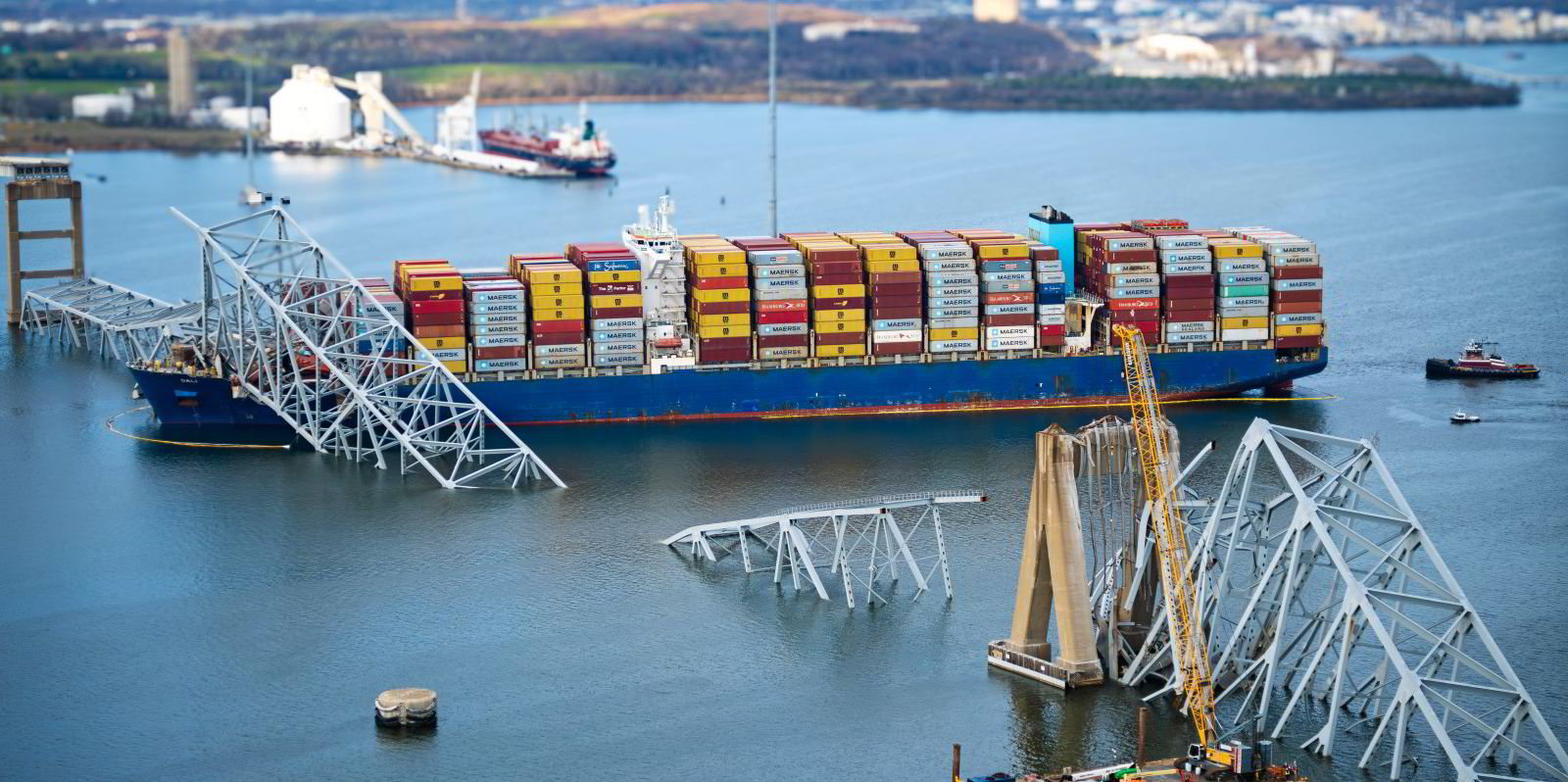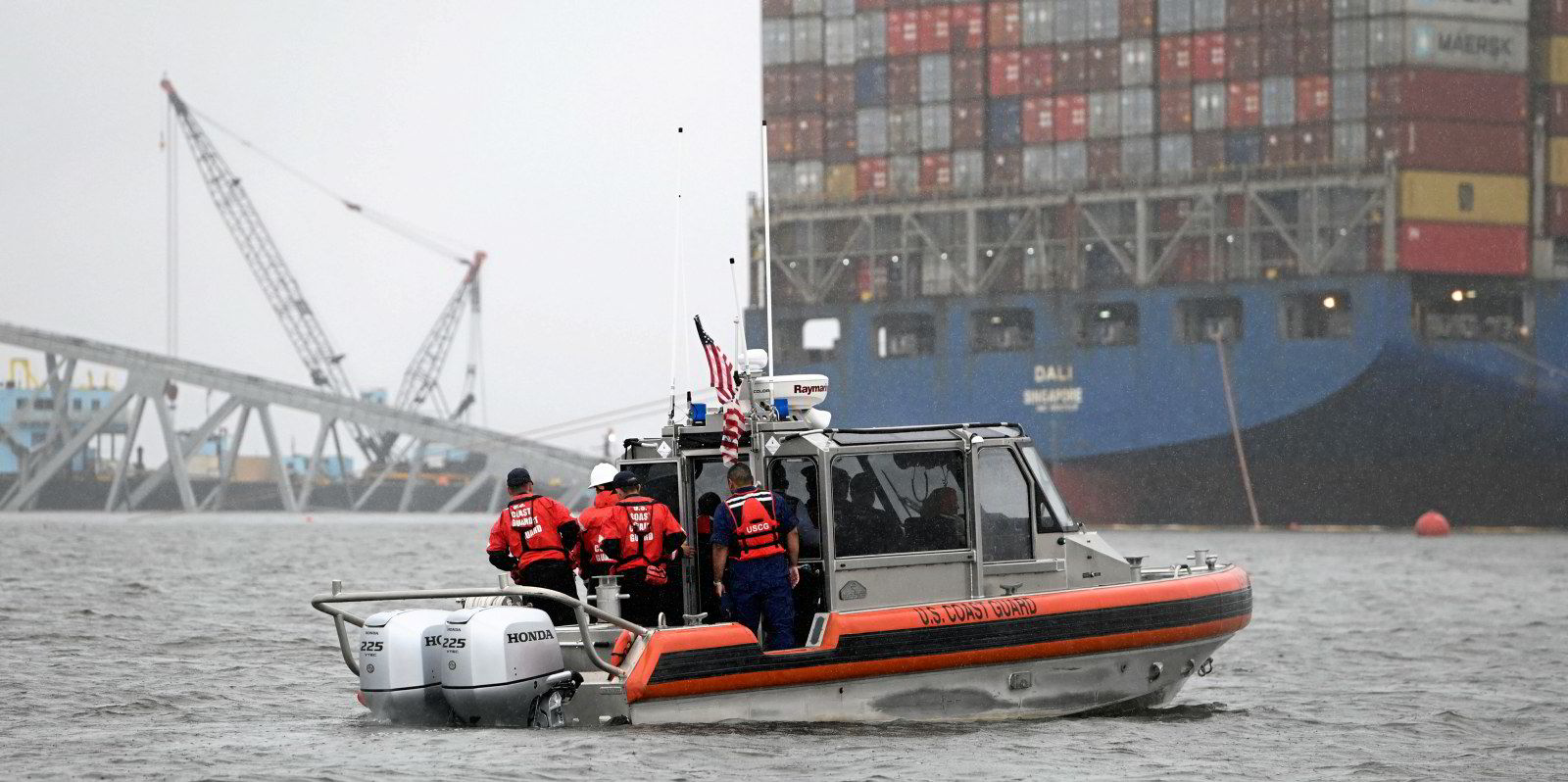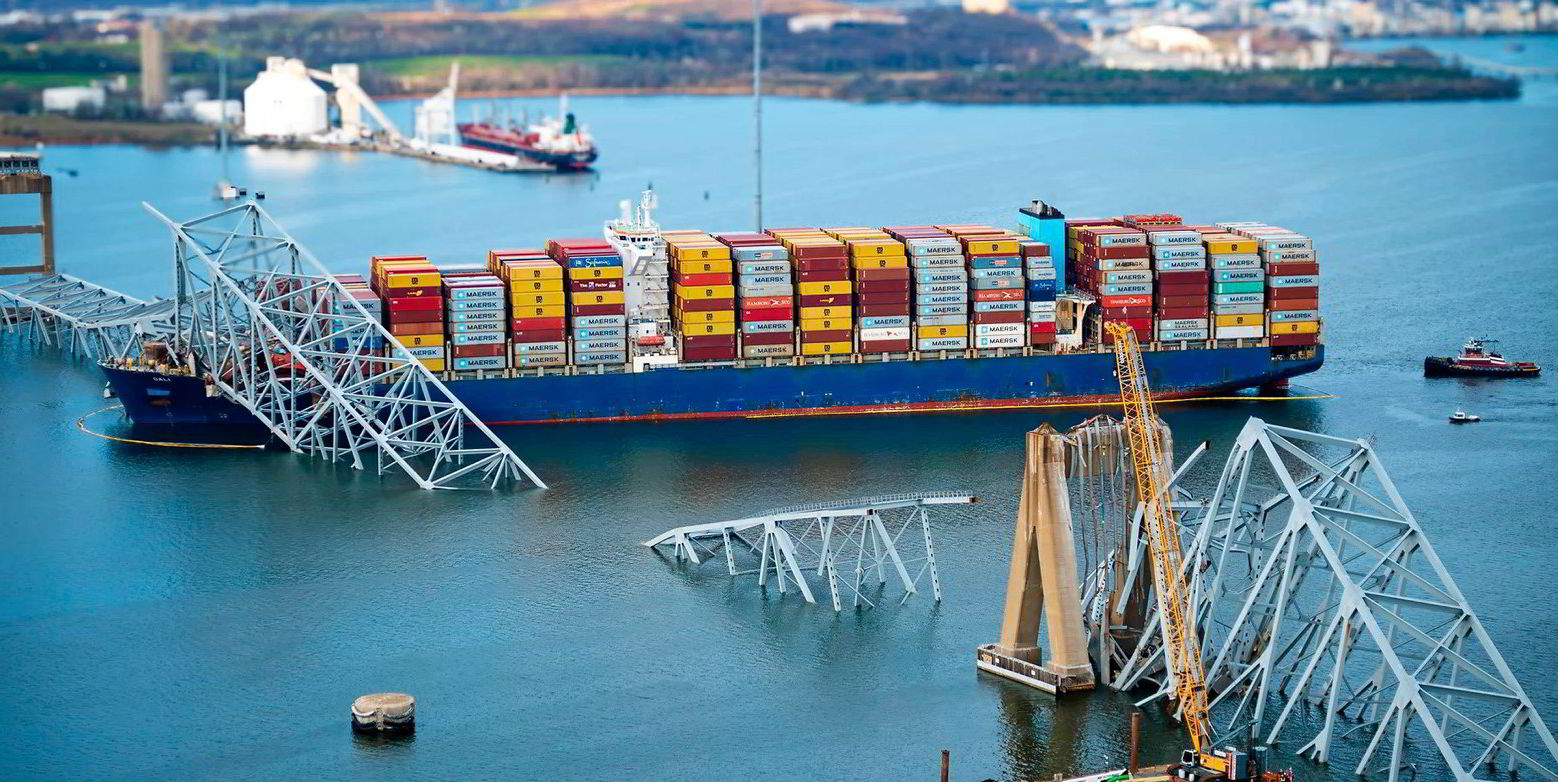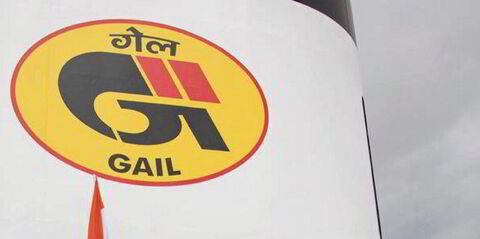Liner shipping stocks have shaken off losses incurred following the Baltimore bridge disaster as carriers try to hike rates.
The rebound has been led by Israeli liner company Zim which this week posted its strongest day in three months.
Significant gains have also been posted by other listed liner operators including AP Moller-Maersk, Hapag-Lloyd and Cosco Shipping.
Zim’s stock price led the way having gaining 10% since Tuesday and reaching a four-week high of $11.22 by the close on Thursday.
That is still down 25% from its $15 peak at the end of January, but still up 13% year to date, according to a note by investment bank Jefferies
The stock revival was replicated by Maersk and has clawed back the majority of the stock losses since the collapse of the Francis Scott Key Bridge in Baltimore on 26 March.
The Danish carrier saw its share price pummelled immediately after the disaster involving the 9,662-teu Dali (built 2015).
Wider impact
Maersk, who had the vessel under long-term charter, lost as much as $1bn from its nearly $20bn stock valuation immediately after the accident, according to Alphaliner.
But its stock was trading at DKK 9.57 ($1.39) on Friday, up from its pre-accident share price of DKK 9.1.

The stock is believed to have recovered a large part of its ground after the Easter break as the carrier’s exposure was deemed limited.
Stocks in several other shipping companies have risen since the accident.
Germany’s Hapag-Lloyd traded at €142 ($154) on Friday morning, its highest since February.
Cosco Shipping Holdings, owner of Cosco Shipping Lines and OOCL’s parent company OOIL, was also at a four-week high of ¥10.58 ($1.46) by the close on 4 April.
Container carrier stock prices have risen since December after the Red Sea crisis led to the potential for more tonne-mile demand as lines were forced to sail around southern Africa.
That was reflected in surging freight rates in January on the Asia-Europe and transpacific routes.
Diversion-adjusted floor
Spot freight rates have been sliding since February.
There are signs that the fall may have been reaching their new diversion-adjusted floor, says Judah Levine, research lead of freight benchmarking portal Freightos.
Decreases from peaks have slowed while carriers are trying to push through general rate increases that the liner operators hope will stick.
Asia-Europe freight rates had been at $1,500 per 40-foot equivalent unit in December before surging to $5,000 per feu in January.
Rates were trading at $3,255 per feu by the end of Thursday.
Transpacific rates remain unchanged from the latest levels with Asia-USEC at about $4,000 to $4,500 per feu, down from the February peak of more than $6,000 per feu but above the $2,500 per feu prevailing in early December.
Container trades have generally weathered the impact of the Baltimore bridge disaster by diverting vessels to alternative ports such as New York/New Jersey and Norfolk.
This leads to a 10% increase in port handling in these two ports, which is within their capacity.
That may result in some delays, and cost increases might be expected, but nothing disruptive on the ocean side, Vespucci Maritime chief executive Lars Jensen said.
Rerouting
Container lines are rerouting their services to Baltimore and will be less severely impacted than the automotive sector, according to S&P Global Market Intelligence’s data.
That includes Maersk and its 2M Alliance partner MSC, which accounted for 53% of imports to Baltimore in the 12 months to the end of February.
The two carriers are also major users of Philadelphia, Norfolk and Newark.
A similar situation applies for Zim, which accounted for 19.8% of containerised imports into Baltimore, S&P said.
Neither Evergreen Marine nor Atlantic Container Line operates in Philadelphia and so may need to transfer to Norfolk or New York, it added.
“While the peak season from July onward may prove more challenging, seasonal goods only represented 6% of Baltimore’s imports,” S&P’s head of supply chain research Chris Rogers said.






